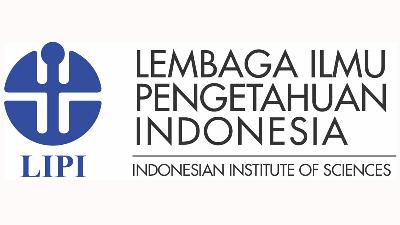The Effect of Servant Leadership and Compensation on Turnover Intention Through Organizational Commitment
Abstract
Keywords
Full Text:
PDFReferences
Ahmad, A., Bibi, P., & Majid, A. H. A. (2016). Co-worker_Support_as_Moderator. 10(4), 695–709.
Allen, N. J., & Meyer, J. P. (1990). The measurement and antecedents of affective, continuance and normative commitment to the organization. Journal of Occupational Psychology, 63(1), 1–18. https://doi.org/10.1111/j.2044-8325.1990.tb00506.x
Almalki, M. J., FitzGerald, G., & Clark, M. (2012). The relationship between quality of work life and turnover intention of primary health care nurses in Saudi Arabia. BMC Health Services Research, 12(1), 314. https://doi.org/10.1186/1472-6963-12-314
Azeez, R. O., Jayeoba, F., & Adeoye, A. (2016). Job satisfaction, turnover intention and organizational commitment - journal not ranked. BVIMSR’s Journal of Management Research - Journal Not Ranked, 8(2), 102–114.
Azwar, S. (2012). Reliabilitas dan Validitas. Pustaka Pelajar. Yogyakarta.
Barbuto, J. E., & Wheeler, D. W. (2006). Scale development and construct clarification of servant leadership. Group and Organization Management, 31(3), 300–326. https://doi.org/10.1177/1059601106287091
Bhayo, A. R., Shah, N., & Chachar, A. A. (2017). The Impact of Interpersonal Conflict and Job Stress on Employees Turnover Intention.(Report). International Journal of Arts and Humanities, 45(45), 179.
Claudia, M. (2018). THE INFLUENCE OF PERCEIVED ORGANIZATIONAL SUPPORT, JOB SATISFACTION AND ORGANIZATIONAL COMMITMENT TOWARD ORGANIZATIONAL CITIZENSHIP BEHAVIOR (A Study of the Permanent Lecturers at University of Lambung Mangkurat, Banjarmasin). Journal of Indonesian Economy and Business, 33(1), 23. https://doi.org/10.22146/jieb.17761
DeConinck, J., & DeConinck, M. B. (2017). The Relationship between Servant Leadership, Perceived Organizational Support, Performance, and Turnover among Business to Business Salespeople. Archives of Business Research, 5(10), 38–52. https://doi.org/10.14738/abr.510.3730
Dutta, S., & Khatri, P. (2017). On the Horizon Article information : On The Horizon, 25(1), xxx. Retrieved from http://www.emeraldinsight.com/doi/
abs/10.1108/OTH-06-2016-0029
Ekinci, A. (2015). Okul Müdürlerinin Hizmetkar Liderlik Davranişlari Ölçeʇinin Geliştirilmesi ve Hizmetkar Liderlik Davranişlarinin Öʇretmen Görüşlerine Göre Deʇerlendirilmesi. Egitim ve Bilim, 40(179), 341–360. https://doi.org/10.15390/EB.2015.2152
Green, A. E., Miller, E. A., & Aarons, G. A. (2013). Transformational leadership moderates the relationship between emotional exhaustion and turnover intention among community mental health providers. Community Mental Health Journal, 49(4), 373–379. https://doi.org/10.1007/s10597-011-9463-0
Greenleaf, R. (1977). TheServantasLeader. 338.
Guldberg, C. G. (2013). Understanding the Definition of Compensation: A Key Element of Tax-Qualified Plan Administration. Benefits Law Journal, 26(2), 62–74. Retrieved from http://library3.webster.edu/login?url=http:
//search.ebscohost.com/login.aspx?direct=true&db=bth&AN=87634957&site=ehost-live
Guzeller, C. O., & Celiker, N. (2019). Examining the relationship between organizational commitment and turnover intention via a meta-analysis. International Journal of Culture, Tourism, and Hospitality Research, 14(1), 102–120. https://doi.org/10.1108/IJCTHR-05-2019-0094
Hair, J. F., Ringle, C. M., & Sarstedt, M. (2013). Partial Least Squares Structural Equation Modeling: Rigorous Applications, Better Results and Higher Acceptance. Long Range Planning, 46(1–2), 1–12. https://doi.org/10.1016/j.lrp.2013.01.001
Han, Y., Kakabadse, N. K., & Kakabadse, A. (2010). Servant leadership in the People’s Republic of China: A case study of the public sector. Journal of Management Development, 29(3), 265–281. https://doi.org/10.1108/02621711011025786
Hanse, J. J., Harlin, U., Jarebrant, C., Ulin, K., & Winkel, J. (2016). The impact of servant leadership dimensions on leader-member exchange among health care professionals. Journal of Nursing Management, 24(2), 228–234. https://doi.org/10.1111/jonm.12304
Hashish, E. A. A. (2015). Relationship between ethical work climate and nurses ’ perception of organizational support , commitment , job satisfaction and turnover intent. Nursing Ethics, 1–16.
Heneman, H. G., & Schwab, D. P. (1985). Pay Satisfaction: Its Multidimensional Nature and Measurement. International Journal of Psychology, 20(1), 129–141. https://doi.org/10.1080/00207598508247727
Hunter, E. M., Neubert, M. J., Perry, S. J., Witt, L. A., Penney, L. M., & Weinberger, E. (2013). Servant leaders inspire servant followers: Antecedents and outcomes for employees and the organization. Leadership Quarterly, 24(2), 316–331. https://doi.org/10.1016/j.leaqua.2012.12.001
Jang, J., & Kandampully, J. (2018). Reducing Employee Turnover Intention Through Servant Leadership in the Restaurant Context: A Mediation Study of Affective Organizational Commitment. International Journal of Hospitality and Tourism Administration, 19(2), 125–141. https://doi.org/10.1080/15256480.2017.1305310
Joarder, M. H. R., & Sharif, M. Y. (2011). The Role of HRM Practices in Predicting Faculty Turnover. The South East Asian Journal of Management, 5(2), 159–179.
Kashyap, V., & Rangnekar, S. (2016). Servant leadership, employer brand perception, trust in leaders and turnover intentions: a sequential mediation model. Review of Managerial Science, 10(3), 437–461. https://doi.org/10.1007/s11846-014-0152-6
Khulida Kirana, Y., & Fee-Yean, T. (2015). Enhancing career commitment : The influence of human resource management practices. International Journal of Business and Society, 16(2), 237–246.
Lapointe, É., & Vandenberghe, C. (2018). Examination of the Relationships Between Servant Leadership, Organizational Commitment, and Voice and Antisocial Behaviors. Journal of Business Ethics, 148(1), 99–115. https://doi.org/10.1007/s10551-015-3002-9
Long, C. S., & Perumal, P. (2014). Examining the impact of human resource management practices on employees’ turnover intention. International Journal of Business and Society, 15(1), 111–126.
Malhotra, Naresh K. (2010). Riset Pemasaran (Marketing Research) (Edisi 4 Jilid 1).New Jersey. PT. Indeks. Indonesia.
McCann, J. T., Graves, D., & Cox, L. (2014). Servant Leadership, Employee Satisfaction, and Organizational Performance in Rural Community Hospitals. International Journal of Business and Management, 9(10). https://doi.org/10.5539/ijbm.v9n10p28
Mobley, W. H., Horner, S. O., & Hollingsworth, A. T. (1978). An evaluation of precursors of hospital employee turnover. Journal of Applied Psychology, 63(4), 408–414. https://doi.org/10.1037/0021-9010.63.4.408
Mosadeghrad, A. M., Ferlie, E., & Rosenberg, D. (2011). A study of relationship between job stress, quality of working life and turnover intention among hospital employees. Health Services Management Research, 24(4), 170–181. https://doi.org/10.1258/hsmr.2011.011009
Muhammad, I. G., & Abdullah, H. H. (2016). Assessment of organizational performance: Linking the motivational antecedents of empowerment, compensation and organizational commitment. International Review of Management and Marketing, 6(4), 974–983.
Muthia, A., & Krishnan, V. R. (2015). Servant Leadership and Commitment: Role of Transformational Leadership. International Journal on Leadership, 3(1). https://doi.org/10.21863/ijl/2015.3.1.002
Nawab, S., & Bhatti, K. (2011). Influence of employee compensation on organizational commitment and job satisfaction: A case study of educational sector of Pakistan. International Journal of Business and Social Science, 2(8), 25–32.
Noviantoro, D., Moeins, A., & Madiistriyatno, H. (2018). Antecedent of work satisfaction, and implications to turnover intention salesman dealer official automobile. Academy of Strategic Management Journal, 17(6), 1–9.
Olesia, W. S., Namusonge, G. S., & Iravo, M. E. (2013). Role of Servant Leadership on Organizational Commitment : An Exploratory Survey of State Corporations in Kenya. International Journal of Humanities and Social Science, 3(13), 85–94. https://doi.org/10.9790/0837-20540815
Palumbo, R. (2016). Challenging Servant Leadership In The Nonprofit Sector: The Side Effects Of Servant Leadership. Journal of Nonprofit Education and Leadership, 6(2), 81–98. https://doi.org/10.18666/jnel-2016-v6-i2-6824
Rafique, S., Sidrarafiqyahoocom, E., & Badar, M. (2015). Role of Compensation Management in Balancing the Employees Relationship. 8, 27–36.
Ramli, A., & Desa, N. M. (2014). the Relationship Between Servant Leadership and Organizational Commitment: the Malaysian Perspectives. International Journal of Management and Sustainability, 3(2), 111–123.
Ramzan, M., Zubair, H. M. K., Ali, G., & Arslan, M. (2014). Impact of Compensation on Employee Performance ( Empirical Evidence from Banking Sector of Pakistan ) Islamia University of Bahawalpur Research Scholars of Department of Management Sciences. 5(2), 302–309.
Renaud, S., Morin, L., & Béchard, A. (2017). Traditional benefits versus perquisites: A longitudinal test of their differential impact on employee turnover. Journal of Personnel Psychology, 16(2), 91–103. https://doi.org/10.1027/1866-5888/a000180
Santhanam, N., Kamalanabhan, T. J., Dyaram, L., & Ziegler, H. (2017). Impact of human resource management practices on employee turnover intentions: Moderating role of psychological contract breach. Journal of Indian Business Research, 9(3), 212–228. https://doi.org/10.1108/JIBR-10-2016-0116
Satardien, M., Jano, R., & Mahembe, B. (2019). The relationship between perceived organisational support, organisational commitment and turnover intention among employees in a selected organisation in the aviation industry. South African Journal of Childhood Education, 17, 1–9. https://doi.org/10.4102/sajhrm.v17i0.1123
Setiawan, Margono; Surachman, Surachman & Irawanto, D. W. (2017). Employees Performance ; Leadership , Organizational Commitment and Trust Retno Purwani SETYANINGRUM * Margono SETIAWAN Surachman SURACHMAN Dodi Wirawan IRAWANTO. 11(2), 281–288.
Silaban, N., & Syah, T. Y. R. (2018). The Influence of Compensation and Organizational Commitment on Employees’ Turnover Intention. 20(3), PP. https://doi.org/10.9790/487X-2003010106
Sinem AYDOGDU; Baris ASIKGIL. (2011). An Empirical Study of the Relationship Among Job Satisfaction , Organizational Commitment and Turnover Intention. International Review of Management and Marketing, 1(3), 43–53.
Steaventinus Tarigan, F., Absah, Y., & Author, C. (2020). The Effect of Compensation and Work Environment on Organizational Commitment of Employee in Bank XXX, Medan. International Journal of Research and Review (Ijrrjournal.Com), 7(1), 1.
Sullivan, G., & Self, S. (2019). How Servant Leadership Principles Affect Employee Turnover at a Solid Waste Management Firm. Journal of Leadership, Accountability and Ethics, 16(2), 64–80. https://doi.org/10.33423/jlae.v16i2.2023
Thakre, N. (2015). Organizational Commitment and Turnover Intention in BPO-ITeS and Retail Sector Employees. Journal of Psychosocial Research, 10(1), 89.
Wadhawan, C. (2017). A Study of Relationship between Compensation and Organizational Commitment in Pharmaceutical Sector. (Icaet), 7–12.
Wang, L., Cheng, M. Y., & Wang, S. (2018). Carrot or Stick? The Role of In-Group/Out-Group on the Multilevel Relationship Between Authoritarian and Differential Leadership and Employee Turnover Intention. Journal of Business Ethics, 152(4), 1069–1084. https://doi.org/10.1007/s10551-016-3299-z.
Weldeyohannes, G. (2016). Compensation Practice and Teachers Turnover Intention in Tigray. International Journal of Science and Research (IJSR), 5(9), 1372–1379.
Wirawan. (2017). Kepemimpinan: Teori, Psikologi, Perilaku Organisasi, Aplikasi dan Penelitian. PT RajaGrafindo Persada. Jakarta.
Wu, C.-C., & Liu, N.-T. (2014). Perceived Organizational Support, Organizational Commitment, and Service-Oriented Organizational Citizenship Behaviors. International Journal of Business and Information, 9(1), 61–88.
Zhao, C., Liu, Y., & Gao, Z. (2016). An identification perspective of servant leadership’s effects. Journal of Managerial Psychology, 31(5), 898–913. https://doi.org/10.1108/JMP-08-2014-0250
Refbacks
- There are currently no refbacks.

This work is licensed under a Creative Commons Attribution 3.0 License.
Supported by :


 Indexed by :
Indexed by :




